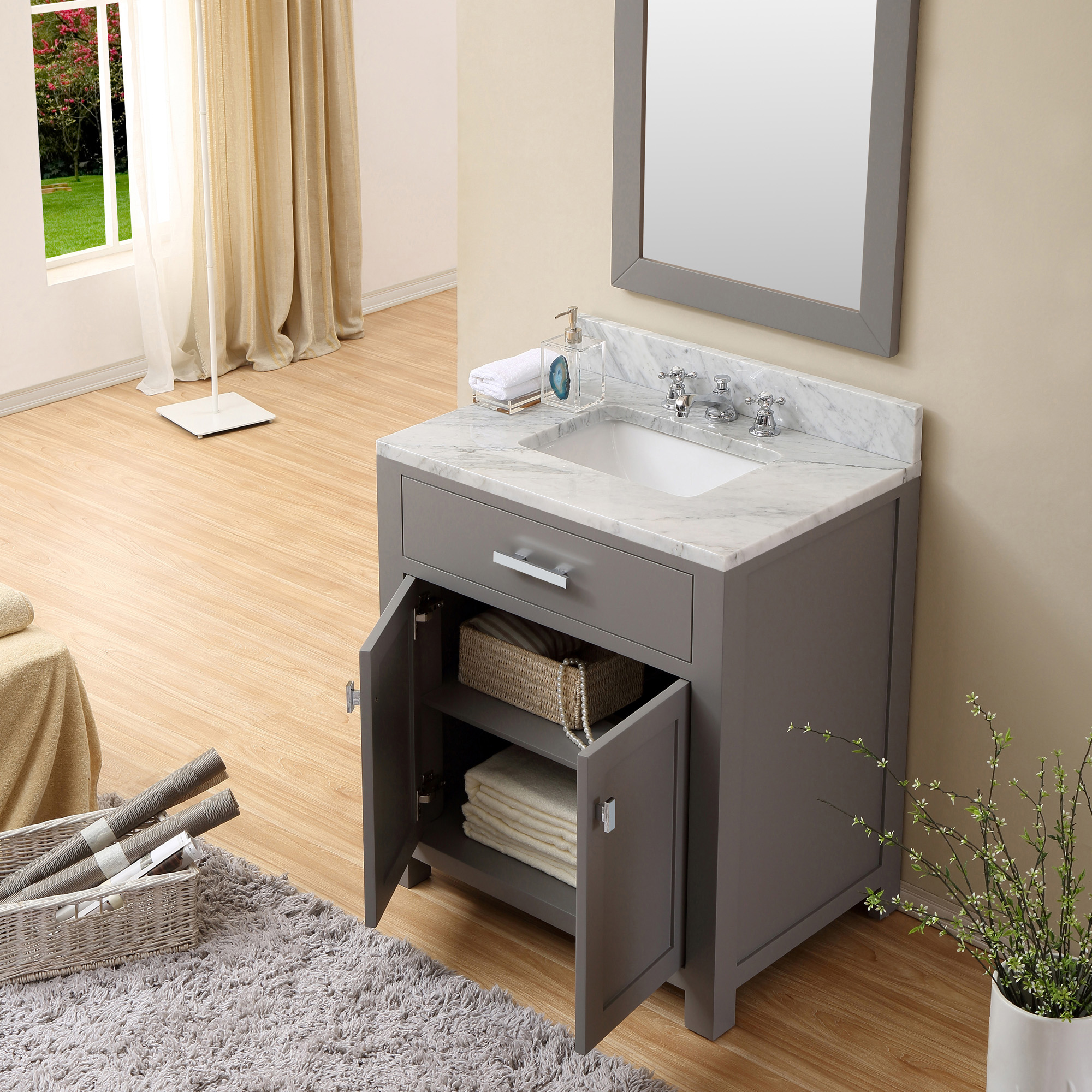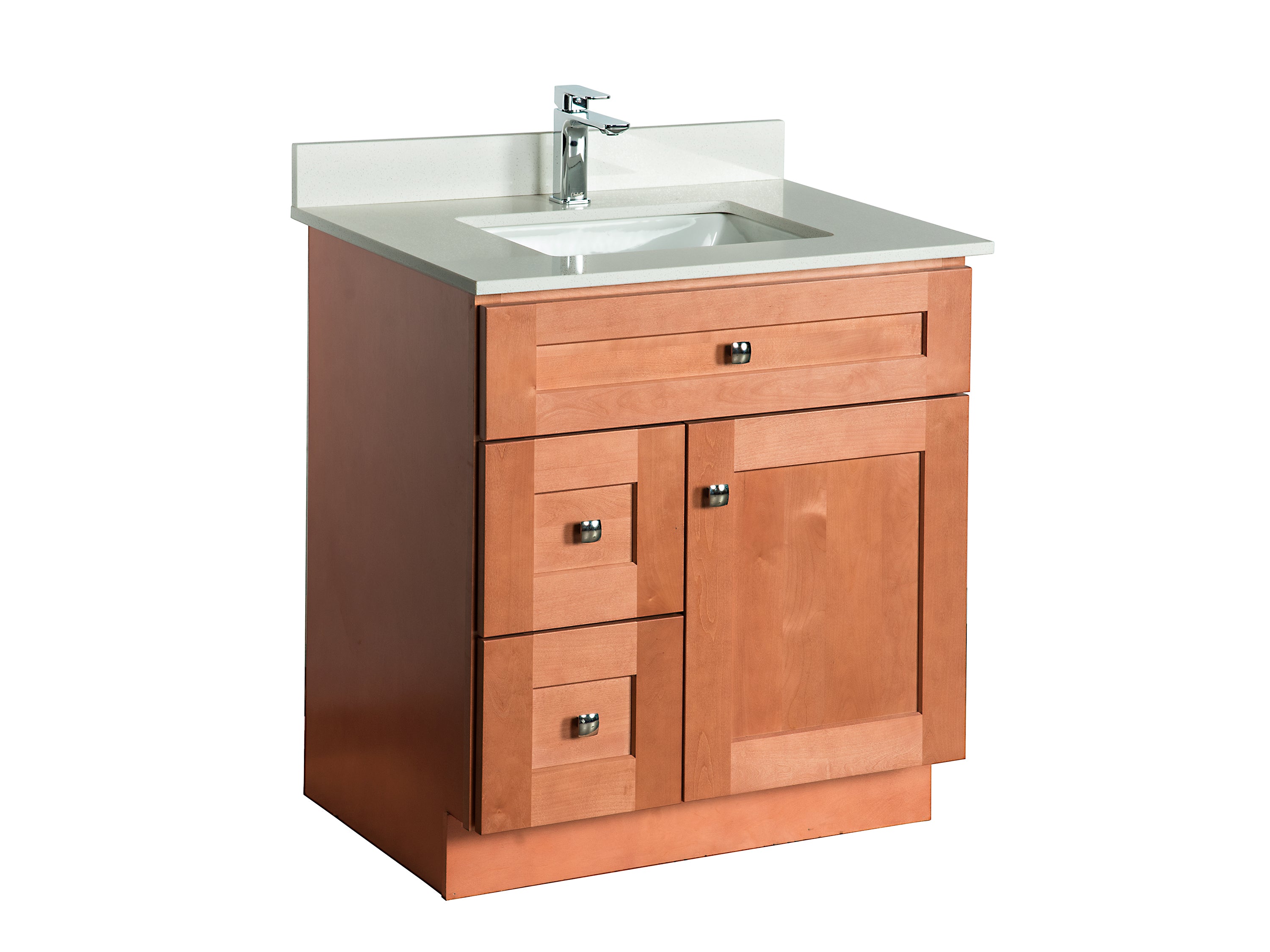Understanding the Appeal of Unfinished Bathroom Vanities: Unfinished Bathroom Vanities 30 Inch

Unfinished bathroom vanities offer a unique blend of practicality and personalization, making them an attractive option for homeowners seeking a customized and cost-effective approach to their bathroom renovation.
Cost Savings
Unfinished vanities can provide significant cost savings compared to their pre-finished counterparts. The absence of a pre-applied finish eliminates the manufacturer’s labor costs, resulting in a lower price tag for the consumer. This price difference can be substantial, especially for larger vanities or those crafted from premium wood species.
Creative Freedom
Unfinished vanities offer unparalleled creative freedom, allowing homeowners to express their individual style and preferences. They can choose the stain, paint, or finish that best complements their bathroom’s décor and overall design aesthetic. This customization extends to the hardware, allowing for the selection of knobs, pulls, and other accessories that perfectly match the desired look and feel.
Popular Wood Species
Several wood species are commonly used for bathroom vanities, each possessing unique characteristics that influence their suitability and aesthetic appeal.
- Oak: A durable and classic choice, oak is known for its strength, distinctive grain pattern, and warm tones. It can be stained to achieve a wide range of colors, from rich browns to light honey hues.
- Maple: Maple is prized for its fine, even grain and smooth surface, making it ideal for intricate carvings and detailed designs. It is often used for vanities that require a sleek and modern aesthetic.
- Cherry: Cherry wood is known for its reddish-brown hue, beautiful grain pattern, and rich color that deepens with age. It is a popular choice for traditional and rustic bathroom styles.
- Walnut: Walnut wood is characterized by its dark, rich color, distinctive grain pattern, and natural oils that resist moisture and stains. It adds a touch of elegance and sophistication to any bathroom.
Choosing the Right Unfinished Vanity for Your Bathroom

Choosing the right unfinished vanity for your bathroom is an important decision, as it will set the tone for the entire space. It’s essential to consider your bathroom’s size, style, and your personal preferences.
Vanity Size and Style
The size of your bathroom is the first factor to consider when selecting a vanity. For a 30-inch space, a 30-inch wide vanity is ideal, providing ample storage without overwhelming the room.
- Single Sink Vanities: A single sink vanity is a popular choice for smaller bathrooms, offering a compact design with adequate storage space.
- Double Sink Vanities: For larger bathrooms, a double sink vanity can be a practical and stylish option.
The style of the vanity should complement the overall bathroom design. For a traditional bathroom, a vanity with ornate details and a classic silhouette might be appropriate. For a modern bathroom, a sleek and minimalist vanity with clean lines would be a better choice.
Considering the Overall Bathroom Design
When choosing a vanity, it’s essential to consider the overall bathroom design. The vanity should complement the existing fixtures, flooring, and color palette. For example, if your bathroom has a rustic theme, you might choose a vanity with a distressed wood finish. If your bathroom has a contemporary design, a sleek and minimalist vanity would be a better choice.
Choosing the Right Countertop Material
The countertop material is an important consideration when choosing an unfinished vanity. The countertop should be durable, easy to clean, and complement the overall bathroom design.
- Granite: A popular choice for countertops, granite is durable, scratch-resistant, and comes in a wide variety of colors and patterns.
- Marble: Marble is a luxurious and elegant countertop material, but it is more porous than granite and requires more maintenance.
- Quartz: Quartz is a durable and low-maintenance countertop material that is available in a wide variety of colors and patterns.
- Laminate: Laminate is a budget-friendly countertop material that is available in a wide variety of styles.
Designing a 30-Inch Farmhouse Style Bathroom Vanity
A farmhouse-style bathroom vanity can add a touch of rustic charm to your bathroom. Here’s a design for a 30-inch farmhouse-style vanity:
- Size: 30 inches wide, 34 inches high, and 22 inches deep.
- Material: Constructed from reclaimed wood with a distressed finish.
- Countertop: White quartz with a beveled edge.
- Sink: White porcelain undermount sink.
- Hardware: Black oil-rubbed bronze cabinet pulls and hinges.
- Features: Two doors with shaker-style panels and two drawers with soft-close slides.
This vanity would be a perfect addition to a bathroom with a farmhouse or rustic design.
Finishing Your Unfinished Vanity

Once you’ve chosen your perfect unfinished bathroom vanity, the fun part begins – transforming it into a beautiful and functional piece that complements your bathroom design. This involves a few key steps, each with its own set of considerations to ensure a stunning and long-lasting finish.
Preparing the Vanity for Finishing
Before you start applying stain or paint, it’s essential to prepare the vanity surface for a smooth and even finish. This involves cleaning, sanding, and priming the wood.
- Clean the Vanity Thoroughly: Use a damp cloth to remove dust, dirt, and any residues from the manufacturing process. Allow the vanity to dry completely before proceeding.
- Sand the Surface: Sanding helps create a smooth surface for the stain or paint to adhere to. Start with a coarse-grit sandpaper (80-120 grit) to remove any rough spots or imperfections. Gradually progress to a finer grit (150-220 grit) for a smoother finish.
- Prime the Vanity: Applying a primer helps the stain or paint to adhere better and creates a more even finish. Choose a primer specifically designed for wood and let it dry completely before moving to the next step.
Choosing the Right Stain or Paint
Selecting the right stain or paint for your bathroom vanity is crucial, as it will significantly impact the final look and feel of your bathroom.
- Consider the Style: A traditional bathroom may benefit from a darker stain or a classic white paint, while a modern bathroom could embrace bold colors or a sleek, minimalist finish.
- Choose a Water-Resistant Finish: Bathrooms are prone to moisture, so it’s essential to select a stain or paint that’s specifically designed for high-moisture environments. Water-based stains and paints are often a good choice, as they tend to be more durable and less likely to crack or peel over time.
- Test the Stain or Paint: Before committing to a particular stain or paint color, test it on a small, inconspicuous area of the vanity. This will help you visualize the final color and ensure you’re happy with the result.
Applying Stain or Paint, Unfinished bathroom vanities 30 inch
Once the vanity is prepped and you’ve chosen your finish, you can begin the application process.
- Apply Stain: If you’re using a stain, apply it evenly using a brush or cloth. Follow the manufacturer’s instructions for drying time and apply multiple coats if needed.
- Apply Paint: If you’re using paint, apply it with a brush or roller. Use thin coats and allow each coat to dry completely before applying the next. Two or three coats are usually sufficient for a good coverage.
Applying a Protective Sealant
A protective sealant is an essential final step in finishing your bathroom vanity. It helps to protect the surface from water damage, stains, and scratches, ensuring its longevity and beauty.
- Choose a Water-Based Sealant: Water-based sealants are typically the best choice for bathroom vanities, as they offer excellent protection against moisture and are less likely to yellow over time.
- Apply the Sealant: Apply the sealant evenly using a brush or cloth. Follow the manufacturer’s instructions for drying time and apply multiple coats if needed.
Installing Your 30-Inch Bathroom Vanity
Once your vanity is finished, you can start the installation process. This typically involves attaching the vanity to the wall, connecting the plumbing, and installing the hardware.
- Mark the Wall: Use a level to mark the wall where you want to install the vanity. Ensure the marked area is level and plumb.
- Attach the Vanity to the Wall: Use appropriate screws and anchors to secure the vanity to the wall. Consult the manufacturer’s instructions for specific recommendations.
- Connect the Plumbing: Connect the vanity’s drain pipe to the bathroom drain. Install the faucet and connect the water supply lines to the vanity.
- Install Hardware: Install the vanity’s hardware, such as the cabinet doors, drawers, and knobs.
